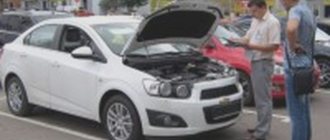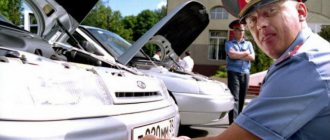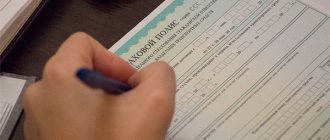Registration of a trailer follows the same principle as a car. Everything is complicated only by the fact that the trailer is homemade, that is, the owner did not buy it, but made it himself or to order.
Dear readers! Our articles talk about typical ways to resolve legal issues, but each case is unique. If you want to find out how to solve your particular problem, please use the online consultant form on the right or call. It's fast and free!
In this case, this item will no longer be just a vehicle. It must meet certain requirements prescribed by law. How to register such a trailer, how much does it cost?
Basic requirements for a homemade trailer
You can register a single vehicle only after the testing laboratory has given the go-ahead.
Before going to this place, you need to find out what requirements the model must meet:
- Dimensions. Length – no more than 12 meters, height – up to 4 meters, width – no more than 2.5 meters. The total length of the vehicle and trailer must not exceed 18.3 meters.
- Weight. Light category – up to 750 kg. In this case, brakes are not needed. Medium category – up to 3500 kg maximum weight. Inertia brakes will do. And the last group with a mass of no more than 10,000 kg requires permanent brakes.
- Another important parameter is the wheels. Some must be the same in size, structure, and characteristics. Tread depth – up to 1.6 millimeters. It is also worth paying attention to the fact that trailers, starting from the middle category, need to change tires depending on the season. From December 1 to March 1 - winter, in the warm season - summer.
To register a light trailer, laboratory staff will primarily pay attention to markings and lighting equipment. To check a larger transport unit, it is necessary to have a brake system and a test report. For trailers with maximum weight - anti-lock brakes.
Is registration with the traffic police required for a homemade car?
Registration of a homemade car or reconstructed vehicle is necessary if it is used in public places for driving. The owner of the invention must also obtain license plates and insurance. To legally use a vehicle, it must comply with the following standards:
- Engine power up to 50 hp. With. per 1 ton of vehicle weight.
- The length of the homemade product is up to 4.7 m, width is up to 1.8 m.
- The maximum permissible curb weight is no more than 3.5 tons.
- Vehicle exhaust gases and harmful substances released by vehicles must not exceed the EURO-4 environmental standard.
Cases when registration is not required
Not all homemade products need to be registered; there is no need for registration if the maximum speed does not exceed 50 km/h and the working engine volume does not exceed 50 cubic meters. In the case of an electric vehicle, the motor power should not exceed 4 kW. Only persons with a driver's license have the right to operate an unregistered homemade vehicle.
Note! Registration is not actually provided for units in the manufacture of which parts were used that were imported to Russia for more than six months. In order for parts to be used, they must have certification and paperwork proving their legal origin in the country.
Stages of registering a homemade trailer
- The first step is to obtain a certificate from the laboratory, according to which the homemade model meets all the rules set out in the law. A referral for examination can be obtained from an inspectorate employee upon initial contact with the traffic police department. An application is also made there.
- When submitting a referral to a laboratory technician, you will be asked to attach all receipts spent on the purchase of materials for production. In the application, which the owner will be asked to fill out, you must indicate all the names of the spare parts from which the frame was made. Write that the welder who welded this frame has residual qualifications for such employment (has permission to carry out the relevant work). Attach a photo of the entire trailer, as well as a close-up of the hub assembly.
- Now the owner must wait for the data to be reviewed by the laboratory. If employees do not find any deviations, they will issue a certificate and certificate.
- With these documents you will have to go to the traffic police again, write a statement, show the trailer to the inspector so that he can check the actual numbers with those indicated in the documents.
- The last step is to pay the state fee and receive documents.
The whole process takes a lot of time and effort, as well as material resources.
How to proceed when registering a homemade vehicle
Before designing, it is important to familiarize yourself with the GOST requirements for homemade products and regularly review amendments to the rules that may occur during assembly. To register a homemade car, the author must prepare all the required papers and visit the certification point. There are not many such organizations in the country; you can find an authority close to your residential address on the original portal of Rostekhuregulirovaniye. In certain regions there are research institutes for traffic safety, where papers are issued confirming the safety of the unit and its compliance with the requirements.
A hand-assembled unit will be assessed according to a simplified system, since it is produced in small batches, such as a single copy. Thus, the authorities give the inventor the opportunity to operate his home-made vehicle, and people who want to import cars with spare parts will not benefit from certifying them. The certificate does not have a validity period, but the vehicle will no longer meet the operating requirements and will have to be reconstructed if environmental standards for home-made products change.
If there is no identification number for the body, chassis and engine, the unit is sent to the MREO, where they will print a paper stating their absence. Next, the inventor should visit the TSB to obtain a conclusion on the assignment of an identification number; the authority will require:
- passport;
- conclusion from the state traffic police;
- conclusion of MREO specialists.
To quickly receive a document for a car, it is recommended to attach a photo report of the step-by-step assembly of the product to your application. After stamping the number on the homemade body at the traffic police, you should again visit the MREO, where you receive license plates and STS. The authorities that the manufacturer will have to visit during the registration process are: certification center, traffic safety institute, TSB, MREO, traffic police, bank. After successfully completing all procedures, the owner can fully operate his unit.
All vehicles must be registered, including motorcycles, trailers and semi-trailers, with the exception of vehicles whose characteristics are described above. With any modification of the design and spare parts of the vehicle, their new certification is required. For purchased parts, the procedure is not necessary.
Required documents for registration
You can save time if you find out in advance what package of documents is required to apply for registration of a homemade trailer.
The full list includes:
- Passport of a citizen of the Russian Federation.
- Copies and originals of receipts that are issued when purchasing materials for the manufacture of a transport unit.
- Detailed explanation of the model design.
- Photos (from all angles, size 10×15, 4 pieces).
- Receipt indicating payment of the duty.
- A completed application submitted to the MREO.
Documents required for certification/registration of homemade products
Unfortunately, there have been no significant improvements in obtaining various permits and certificates to legalize a self-assembled car. So if you have just finished assembling your unique creation, before registering your homemade car, you will have to spend a lot of time collecting the necessary package of documents.
It is highly advisable, when assembling a car from spare parts, to keep all receipts, invoices and contracts when purchasing them. This is necessary in order to be able to prove to representatives of government agencies that all parts were purchased legally and not purchased from sellers of stolen cars. So, if you find the right part somewhere in a landfill, be sure to record this fact on video or with a camera to prevent any problems from arising.
Before passing certification (or rather, before starting assembly), you will have to study all GOSTs relating to the parameters of the vehicle being tested, taking into account that some requirements may change while you are engaged in amateur activities.
In the absence of identification characteristics such as chassis numbers, power unit numbers, body numbers, an expert opinion will be required to confirm that you purchased them legally. This document will allow you to obtain new identification numbers for them.
When registering a car, you will also need a Russian resident’s passport and a passport. The procedure itself is no different from registering a regular car; you will have to pay for each certificate.
Registration through the State Services portal
Registration via the Internet will significantly reduce time and money. It can be done on the government services website in several stages:
- Select the “Vehicle Registration” section.
- Select the “Register” category.
- Follow the “Registration” link.
- Log in.
- Fill out an electronic application that contains document data.
- Select from the list a date and time acceptable to the applicant when he can personally visit the inspector, and decide which department he will go to.
- Submit your application for consideration. If all information is correct, it will be approved.
- Pay the state fee, which comes with a 30% discount.
- Download and print the payment receipt, as well as the completed application form.
- Arrive at the MREO on the specified day along with documents, an application form and a receipt. There is no need to stand in line; the inspector will call you.
- An employee will check the trailer, which must be located next to the department. Make sure your transport is clean in advance.
- After the last procedure, you can receive a registration certificate and license plate on the same day.
As you can see, when submitting an electronic application, you do not need to visit the laboratory yourself, personally visit inspection staff several times, fill out applications manually, or stand in long lines. A few mouse clicks – problem solved!
In the rooms
Now homemade vehicles also have the right to receive registration numbers from the traffic police, and accordingly the right to move independently on the roads.
To register a specific automotive miracle, you must contact the certification body, present the “product” there, and receive a document confirming the vehicle’s compliance with the technical requirements. And then, with the received paper, go to the traffic police and register the car.
50 horse ruling
Our love for creating numerous machines based on our own designs did not come from a good life. In the Soviet Union there was no talk of producing cars tailored to the needs of a specific consumer - they would have had enough strength to give the market mass models. Therefore, enthusiasts made machines that met the requirements of life from scrap materials and with their own hands.
Of the three old, dead ones, one alive was collected. In the villages, truck bodies were made from passenger cars. Amphibians were created to overcome swamps and other water obstacles. They increased the carrying capacity and lengthened the bodies - after all, the trucks were not sold for personal use.
There were also aesthetes who were not satisfied with the very shape of the production passenger car. They created car variants - from sleek sports cars to the most fantastic and sometimes ridiculous designs. All this was shown at exhibitions and was driven on the roads quite legally.
In the Soviet years, homemade products were not exactly encouraged, but in any case they were not prohibited. The first serious restrictions appeared in the 80s. Namely, restrictions on power (50 horsepower per ton) and dimensions (4.7 meters in length and 1.8 meters in width). There was only one loophole left, which the majority took advantage of. After all, the equipment was registered not only with the traffic police, but also with Rostechnadzor. For example, tractors. SUVs in those days fit well into this category. And the requirements for homemade products in Gostekhnadzor were much softer. As a result, the years 1993 to 1995 saw the highest number of hand-built cars registered.
Years of total ban
The year 2005 turned out to be a black year for homemade products - their registration with both the State Traffic Inspectorate and Rostechnadzor was completely banned. The Supreme Court of the Russian Federation argued the ban by saying that it was necessary to develop clear requirements for “homemade” products. Although the real reason, apparently, lay in the fight against a new phenomenon in the car markets - the sale of so-called construction sets. The essence of the market boom for “construction sets” was simple: in order to evade taxes, a car (for example, a Japanese one) was first imported into Russia in the form of spare parts, then assembled, and registered as homemade.
However, this ban, unfortunately, also affected the authors of real domestic homemade products. Their creative enthusiasm has not dried up! Proof of this is the annual Auto Exotica exhibition, where homemade products are presented in huge quantities. However, in most cases, these are cars without license plates, brought by a tow truck and have no right to live on the roads. Although it was on the roads that other home-made products could give a head start to many production cars.
The shackles have fallen
The new requirements that determine the certification procedure have finally been adopted and approved. The order of Rostekhregulirovaniya, which approved changes N1 “Rules for carrying out work in the Certification System of Motor Vehicles and Trailers” came into force in January of this year.
So, how to register a homemade product in the new realities? First you need to contact the certification body. There are not so many of them around the country. You can select the one closest to you from the list published on the website of the Russian Technical Regulation Agency. (website address: https://www.gost.ru/wps/portal/)
The homemade product will now be assessed according to a simplified scheme. As a “vehicle produced in small series.” The minimum number of cars in a small series is 1 piece.
There is also a small trick with which the state saved itself from the import of “designers”. The number of cars in a small batch must be indicated. It is clear that those who collect for themselves will not make more than one car of the same type. And for anyone who tries to be disingenuous with the state and bring vehicle kits to order, doing almost industrial assembly, it will not be profitable to work under the new certification rules. After all, the number of cars in the batch is checked. The certification procedure cannot be repeated.
True, the type approval received does not have a validity period. It ends when new technical requirements come into force. For example, from the new year the Euro 3 environmental requirements came into force. This means that it was from this year that the type approval ceased to be valid. After all, it approved Euro 2 standards.
According to UN rules
New requirements for home-made machines, naturally, are no lower than for mass-produced ones. There are no concessions here, and most importantly, homemade products must comply with the rules of the UN Economic Commission for Europe. And although small batches will be certified according to a truncated list of requirements, this is still a serious procedure.
According to the document, the safety of the steering wheel, braking properties, seat belt attachment points and the belts themselves, glass, rear-view mirrors and their installation, installation of lighting and light signaling devices, controllability and stability, internal noise, and the content of harmful substances will be checked for compliance with the requirements. cabin, and, of course, the content of harmful substances in the exhaust. This is a selection for passenger cars.
nice moment
There is also a point in the new requirements that is pleasant for inventors. Test vehicles will no longer be damaged: “Individual vehicles are subject to tests that do not damage them. It is permissible to replace tests that cause damage with expert assessment of the design.”
After all these examinations, if the machine meets the requirements, the owner, who is also the inventor, receives type approval. With this document, you have a direct route to the traffic police department at your place of residence, where they will issue a vehicle passport and register the car. Type approval data is entered into the PTS.
Of course, these innovations are unlikely to cause a surge in the amateur construction of new and unusual types of cars. But in any case, life will now become easier for our Kulibins.
The most famous homemade products of recent times: on the left is the ISV, which received the prize as the most exotic car of the year at the Autoexotica exhibition, on the right is the Agata car, built by members of the Moscow Foundation of Author's Cars.
Trailer registration fee
When registering a homemade trailer, you will not need to overpay for detaching the transport unit from the previous owner in order to assign new signs. The state fee for issuing new license plates for 2021 is 1,500 rubles, for issuing a certificate - 500 rubles. You will also have to pay for the examination. Its cost depends on the specific accredited laboratory.
You can save money if you make an appointment with the traffic police online through the State Services portal. The discount will be 30% . The issuance of registration plates for trailers is 1050 rubles , the registration certificate will “cost” 350 rubles .
Where to start registering?
To register a home-made vehicle with the traffic police, you must obtain a document confirming its compliance with the state. standards _ Compliance examinations are carried out by special certification centers. The list can be found on the Rostekhregulirovaniya website.
Your homemade product is subject to evaluation as cars produced in small series. Certification of such vehicles is simplified as much as possible, but still requires collecting a lot of related documents.
Home-made cars have strict restrictions on body parameters. In this case, the assessment of dimensions is, first of all, assessed by certification centers. In this regard, it is advisable to agree on the dimensions of the body before starting to assemble the car, so that in the future there will be no problems with obtaining a certificate of conformity.
IMPORTANT. It will not be possible to get to the test site on your own, so the homemade car will have to be delivered using a tow truck or a car with a trailer.
The certification center will verify compliance with the following parameters:
- The level of noise produced by the device.
- Technical condition of systems (steering, brakes, driving stability, etc.).
- Compliance with dimensions.
- Compliance with international environmental standards (EURO3-4).
Experts may allow some deviations from the standards, but if there are significant non-compliances with the standards, the car will be sent for revision with appropriate recommendations.
If all the indicators of your car meet the standards, a conclusion will be received. If any discrepancies are identified, specialists will issue recommendations for improvements and changes in the design.
ATTENTION. When designing your vehicle, provide a suitable location for attaching the license plate.
Based on the results of the equipment research, the center’s specialists will issue a conclusion on the type of vehicle, it is unlimited.
Your car will also be tested on the track. The purpose of this study is to verify safety and compliance. Until recently, the requirements contained one very unpleasant point - passing a crash test . The car could have been seriously damaged if it passed. To date, the authorities have decided to allow only production vehicles to undergo such tests.
Based on the test results, you will receive an expert opinion. At this point, the first stage of registration can be considered completed.
REFERENCE. If the certificate was not issued the first time you passed the tests, you can apply again. When applying again, please provide the drawings based on which the changes were made.
We have prepared very important information for you about registration, registration and deregistration with the traffic police, as well as obtaining license plates for the following types of transport:
- trailer and homemade trailer;
- scooter, moped and scooter;
- ATV;
- snowmobile;
- motorbike.
Penalty for using an unregistered trailer
Each driver will have to register a trailer if he intends to use it. Otherwise, you may run into punishment from inspectors.
What penalties are provided in this case:
- If a traffic police officer is caught using an unregistered trailer for the first time, you will have to pay up to 800 rubles, depending on the severity of the violation. The higher the mass of the transport unit, the heavier the punishment.
- If there is a repeated offense, no one will make concessions. Your wallet will be empty by a large amount (up to five thousand rubles).
- Pernicious violators will face not only a fine, but also a restriction in driving. The court may impose a period of up to 3 months of deprivation of a driver's license.
Driving without registration
It’s worse if you fail to register your creation due to some circumstances. As you know, traffic rules apply not only on city roads, but also on field, forest, etc. To move around them, licenses and registration are required. Theoretically, it is possible to escape a chase over rough terrain. But this is not the extreme that you were counting on when assembling your buggy? In this case, you will have to fork out for a trailer or a special cart for transportation by partial loading. But with two or three trips per month, this method will not justify itself.
Do I need to deregister a homemade trailer?
Today, when selling a trailer, there is no need to deregister it even when purchasing it. This can be done, but you will have to pay a certain amount for the state duty, drive the transport unit to the parking lot for inspection by an inspection officer and many other nuances.
Therefore, car enthusiasts prefer to simply write a power of attorney for the other owner and have it notarized.
If the new owner decides to install other registration marks, he will bear all the costs himself and receive documents by proxy, that is, the participation of the previous owner will not be required.
A homemade trailer is a little more complicated to design than a factory-purchased one. Before registration, it should be tested for safety in a special laboratory.
Only after the certificate is issued by this institution will the procedure become standard. In order for laboratory technicians to approve registration, the trailer must meet the requirements described in the article.
Didn't find the answer to your question? Find out how to solve exactly your problem - call right now: +7 (Moscow) +7 (812) 309-53-42 (St. Petersburg) It's fast and free!
Free online consultation with a car lawyer
Didn't find the answer to your question? Find out how to solve exactly your problem - call right now: +7 (Moscow) +7 (812) 309-53-42 (St. Petersburg) It's fast and free!
What does Russian legislation say?
Any vehicle manufactured in the Russian Federation or imported into the country must be registered.
This rule is reflected in Article 15 of the Federal Law of December 10, 1995 No. 196-FZ “On Road Safety”. This normative act does not make any divisions. That is, you need to register both a factory-made and a home-made car.
The entire procedure is regulated by Decree of the Government of the Russian Federation of August 12, 1994 No. 938 “On state registration of motor vehicles and other types of self-propelled equipment on the territory of the Russian Federation”, Orders of the Ministry of Internal Affairs of Russia N 399 of 06/26/2018 and N 605 of 08/07/2013.
Difficulties during registration are not related to the status of the vehicle, but to its technical condition. Non-compliance with established standards is identified at the stages of testing and certification. These include:
- malfunctions of security systems, steering, braking systems, rear-view mirrors;
- non-compliance with environmental standards;
- excess noise level;
- car instability;
- inadequate sound insulation.
These factors will result in denial of certification. After eliminating the identified deficiencies, the testing procedure will need to be repeated.
The difference between a self-built and a converted vehicle
A homemade vehicle is one that is manufactured by the owner himself, and not by a licensed manufacturer, for personal use. When designing such equipment, both new and used components, assemblies and parts can be used. Components can be manufactured in a factory, for example, wheels. Assembly is carried out by the owner at his own discretion.
A homemade car differs in its status from a converted one. In the latter case, the equipment is initially produced by a manufacturer who has the appropriate license. During operation, the owner can install additional equipment that was not provided by the manufacturer, for example, spoilers on the body or a gas cylinder (how to register gas equipment with the traffic police?). At the same time, the design of the equipment does not change.
Which self-made machines are subject to the procedure?
Since the legislation does not separate home-built cars from other vehicles, they are subject to general requirements. It is necessary to register a car with an engine volume exceeding 50 cubic centimeters and a maximum design speed of 50 kilometers per hour. Trailers for such vehicles are also subject to registration.
How to obtain a certificate of vehicle compliance with safety requirements
According to clause 75 of the technical regulations of the Customs Union 018/2011, when making changes to the design of the car, it is necessary to carry out technical inspections:
- Before making changes to the design;
- After making changes to the design.
Based on the results of these checks, the traffic police issues the owner of the vehicle a certificate of compliance of the vehicle with safety requirements or refuses it.
So, to get a certificate you need:
1Pass a preliminary technical inspection for the possibility of making changes.
It is necessary to undergo verification at an authorized organization, its address, including the actual one, reference telephone numbers, email address, a unique accreditation entry number in the register of accredited persons, a unique identification number indicated in the unified register of conformity assessment bodies of the Eurasian Economic Union.
2Based on the inspection results, contact the traffic police technical supervision with an application to make changes to the design of the vehicle;
The application form can be found in Appendix No. 1 to Order of the Ministry of Internal Affairs of Russia dated September 10, 2019 N 613 “On approval of the Administrative Regulations of the Ministry of Internal Affairs of the Russian Federation for the provision of public services for issuing a certificate of compliance of a vehicle with changes made to its design with safety requirements.”
3Re-equip the car and pass a vehicle safety check;
Important!
Having received permission from the traffic police, you can begin re-equipping the car. Later, you will need copies of all certificates for the equipment you install. The service center that repaired the car must also fill out a declaration form. For a sample declaration, see Appendix No. 2 of the Ministry of Internal Affairs guidelines No. 13/5-8230.
Complete the inspection at the center where you were pre-tested and keep all documents received for the next step.
4Obtain a certificate of compliance from the traffic police.
Pay the state fee for issuing the certificate (800 rubles according to clause 46 of Article 333.33 of the Tax Code of the Russian Federation). Collect all previously received documents (copies of certificates for the components of the car, an application-declaration, a conclusion based on the results of two checks, as well as a Russian passport, PTS and STS) and contact the traffic police to obtain a certificate.
Procedure
You need to start with the requirements for the design of the car. They are put forward by the testing laboratory. It also issues a conclusion on the conformity of the design of your car. There are certain parameters that must be met. Therefore, we recommend that you first agree on the design of the machine by contacting the Automotive Research Institute. At the same research institute, your vehicle will be tested, after which you will be given a test report.
For each car part, you are required to present a document that confirms the legality of its acquisition. If you have assembled a vehicle from the components of an old car, you must deregister it in advance and obtain a certificate about this. If you bought your previous car second-hand, attach a notarized sales contract to the documents. You will need to present all this to the traffic police.
Once you receive the test report, you need to go to the Highway Safety Institute. This authority will issue you with a conclusion that your car is safe to drive in the city and its design complies with established standards. To receive such a document, you must provide a test report. Certification must be carried out within a month after you submit the corresponding application to government authorities.
Homemade McLaren F1 car
After the work has been done, you can go to the MREO. There you will be given a decision stating that your car does not have an identification number. Then you will need to go with this paper to the forensic bureau, where they will prepare a referral for you to the traffic police to assign an identification number to the car. There you will have to present the following documents:
- passport of a citizen of the Russian Federation;
- opinion from the Institute for Highway Safety;
- conclusion of a forensic expert from the MREO.
The traffic police will assign an identifier to the car and prepare a conclusion about the number. After the number is filled in, you must go to the MREO in your homemade car, taking all the documents received during the procedure. Then your vehicle will finally be registered.
Please note that you will have to pay state fees for each document. After registering the car, you will receive a technical passport. It will indicate “homemade” in the “Brand” column. “Special marks” may indicate which model your car was based on.
Video review of homemade cars of the USSR:
About trailers
If you plan to register a trailer or semi-trailer, the conditions for the procedure change slightly. You will need to purchase a tow bar and present the purchase receipt to the traffic police. In addition, you will need to provide a technical passport of the vehicle with which the trailer will be used.










